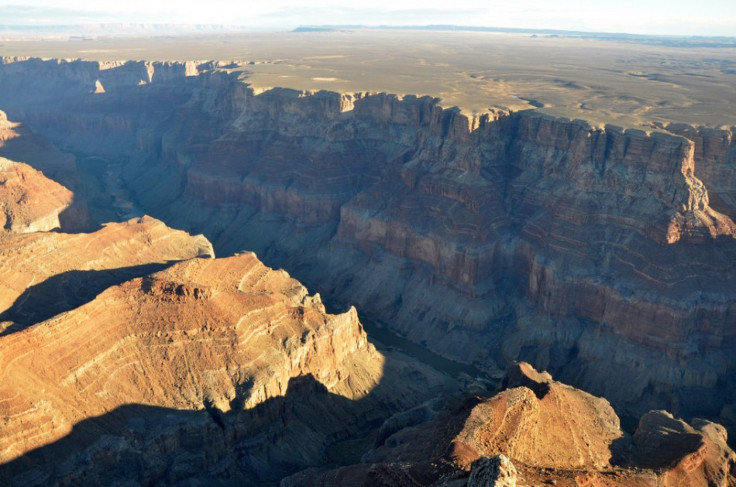Lightning Strike Kills German Tourist at Grand Canyon

One person was killed and five others injured after a fatal lightning strike on the South Rim of the Grand Canyon in Arizona, officials said.
The Northern Arizona News reports that the incident happened around 1:45 p.m. Thursday near the Mohave viewing area at Grand Canyon National Park.
The woman killed, identified as a 64-year-old German national, was part of a tour group visiting the popular park. When rangers arrived at the scene, fellow tourists were performing CPR on the woman who had collapsed after lightning struck near her party. According to the report, rangers took over CPR and moved their life-saving efforts to an ambulance as lightning continued to be a threat to those who were outdoors
The woman has not yet been identified, pending the notification of her family.
The five others who were injured in the strike were transported to Grand Canyon's Emergency Operations Center where basic first aid was provided. Their injuries were not life-threatening, said park spokeswoman Maureen Oltrogge.
Grand Canyon is one of America's biggest tourist draws, attracting over 4.5 million visitors annually.
READ ALSO: The Glory of Grand Canyon National Park: A Photo Tour
Thursday's incident is a tragic reminder that summer storms in the southwest may provide beauty, excitement, and much needed water to the Grand Canyon, but are often accompanied by potentially deadly lightning. Park visitors were reminded Friday that if the sound of thunder follows a lightning flash within 30 seconds or less, they should seek shelter in a building, vehicle or proceed to the nearest bus stop to get a park shuttle.
According to the National Park Service, between 1997 and 2000, lightning struck somewhere in Grand Canyon National Park 104,294 times, averaging 26,073 strikes per year.
You can find out more about lightning danger in Grand Canyon National Park by reading these tips from the National Severe Storms Laboratory.
© Copyright IBTimes 2025. All rights reserved.






















